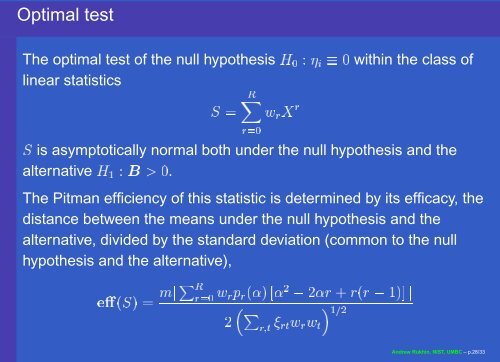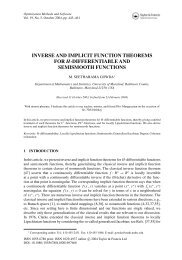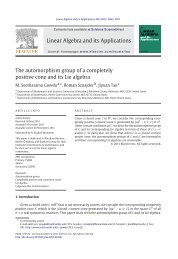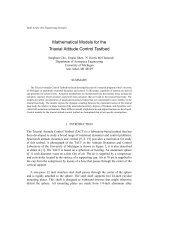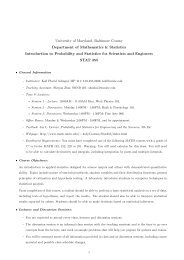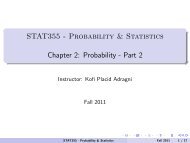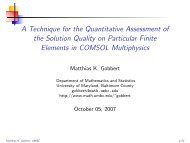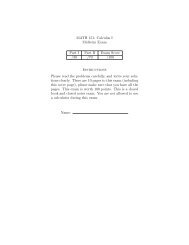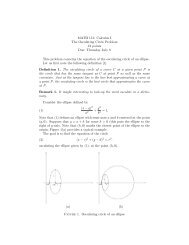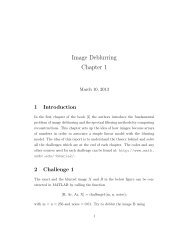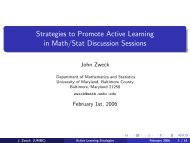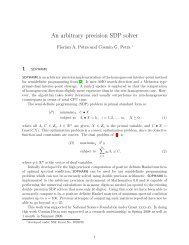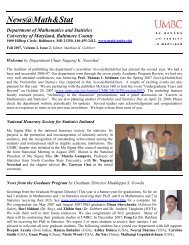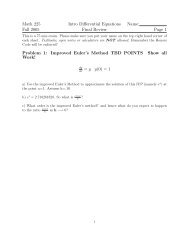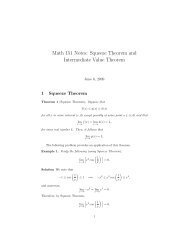TESTING RANDOMNESS - Department of Mathematics and Statistics
TESTING RANDOMNESS - Department of Mathematics and Statistics
TESTING RANDOMNESS - Department of Mathematics and Statistics
Create successful ePaper yourself
Turn your PDF publications into a flip-book with our unique Google optimized e-Paper software.
Optimal test<br />
¢<br />
£<br />
<br />
£<br />
¤§<br />
©<br />
¥<br />
©<br />
¢¡<br />
<br />
¡<br />
£ ¢¢<br />
¥<br />
¢¡<br />
<br />
¡<br />
<br />
¤<br />
¢<br />
¨<br />
§<br />
¢<br />
¡<br />
¢<br />
¡ <br />
¨<br />
<br />
¢<br />
<br />
¡<br />
¢<br />
¡<br />
¡ ¨<br />
£ <br />
<br />
¡<br />
<br />
<br />
©<br />
©¢<br />
The optimal test <strong>of</strong> the null hypothesis<br />
linear statistics<br />
within the class <strong>of</strong><br />
is asymptotically normal both under the null hypothesis <strong>and</strong> the<br />
alternative<br />
.<br />
The Pitman efficiency <strong>of</strong> this statistic is determined by its efficacy, the<br />
distance between the means under the null hypothesis <strong>and</strong> the<br />
alternative, divided by the st<strong>and</strong>ard deviation (common to the null<br />
hypothesis <strong>and</strong> the alternative),<br />
Andrew Rukhin, NIST, UMBC – p.28/33


